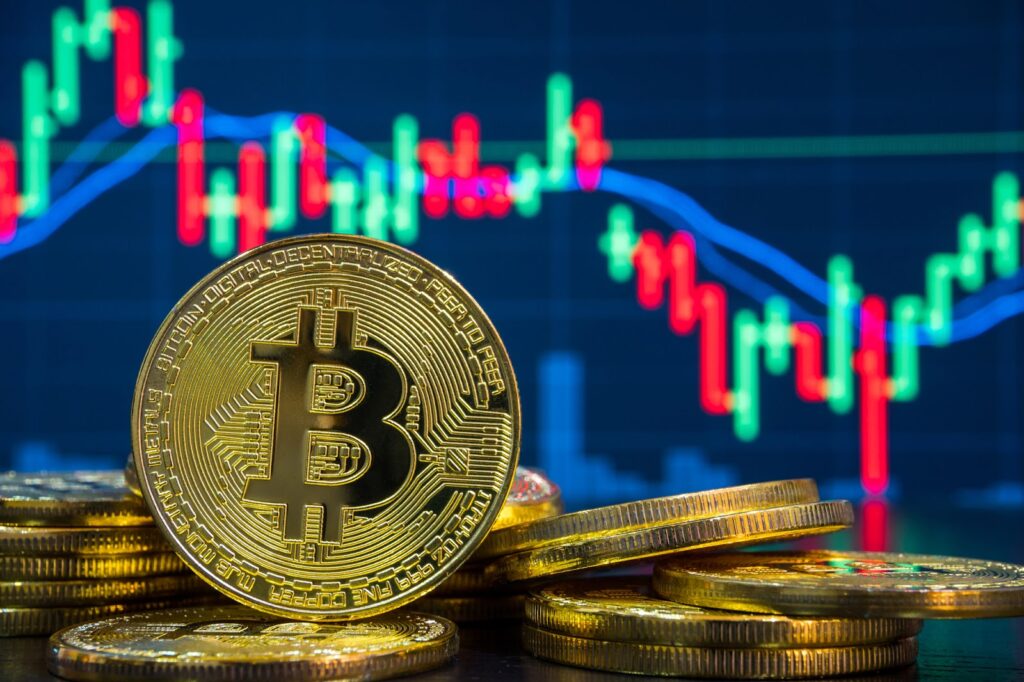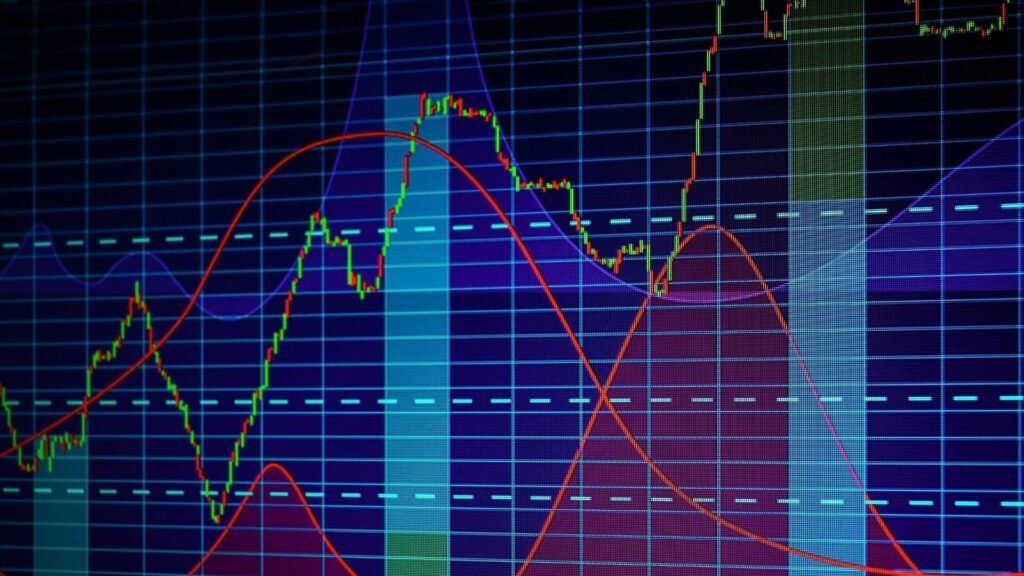
Crypto paper trading allows you to practice trading with virtual money, simulating real market conditions. It’s a risk-free way to test strategies and build your skills. This article will walk you through how to get started paper trading on WallStreetSurvivor.
Key Takeaways
- At WallStreetSurvivor you get a virtual $100,000 in cash to practice trading over 300 crypto currencies at real-time prices.
- You can also trade US stocks and etfs and options.
- Create your own trading contests and invite your friends.
Understanding Crypto Paper Trading

Crypto paper trading is the first step in understanding how unique the crypto market is. This method allows you to practice buying and selling cryptos using virtual funds, providing a realistic yet risk-free trading experience.
The primary aim is to learn and test various trading strategies without the fear of financial loss. Paper trading platforms are designed to mirror real trading environments, complete with real-time market data and trading tools.
You will get comfortable with the unique features and layouts of crypto exchanges without suffering the highs and lows that are infamous in this space. You’ll gain practical experience and enhance your trading skills for all types of assets.
- Crypto paper trading allows you to test strategies and build skills risk-free, simulating real market conditions without financial loss.
- This practice environment enhances confidence through exposure to trading tools and techniques while providing valuable insights into performance metrics.
- Transitioning to live trading requires gradual adjustments and a clear understanding of market dynamics and risks to avoid pitfalls like overconfidence and inadequate risk management.
Ready to get started? Create your account on WallStreetSurvivor and immediately get access to a virtual $100,000 portfolio to invest in cryptocurrencies, stocks and options.
Definition of Crypto Paper Trading
In essence, crypto paper trading is a simulation of trading activities using virtual funds. Allowing newbie and veteran traders to learn the ins and outs of trading platforms and testing their strategies without any financial risk.
By using a paper trading account, you can access real-time market data and place orders as you would in a real brokerage account, but without the possibility of losing real money.

How Paper Trading Works
Paper trading works by providing traders with a set amount of virtual money to start their trading journey. This virtual money lets you place trades and observe how your strategies perform under real-time market conditions. The beauty of paper trading is that it aligns simulated trading with actual market conditions, giving you a taste of the real trading process without any financial risk.
However, it’s important to note that while paper trading provides an accurate simulation, it doesn’t account for execution issues such as slippage or liquidity problems that can occur in live trading. These factors can significantly impact the performance of trading strategies in real market conditions. Therefore, while paper trading is an excellent tool for practice, you should be mindful of these differences when transitioning to live trading.
Benefits of Crypto Paper Trading

Engaging in crypto paper trading offers numerous benefits that can significantly enhance your trading journey. One of the most significant advantages is the ability to practice trading without any financial risks.
It’s an excellent opportunity to experiment with different tools and strategies, allowing you to discover what works best for you.
Ultimately, the experience gained through paper trading is invaluable. It helps you build the confidence needed to transition to live trading and make informed decisions in the real cryptocurrency market.
Strategy Testing and Development
One of the main advantages of paper trading is the ability to test and develop various trading strategies. You can use virtual funds in your paper trading account to experiment with different strategies without any financial risk.
Here are a few fundamental concepts to consider:
- Fundamental Analysis vs. Technical Analysis: Both approaches have their merits. Fundamental analysis focuses on the underlying value of a cryptocurrency, while technical analysis examines statistical trends and patterns to inform trading decisions.
- Creating a Trading Plan: Crafting a comprehensive trading plan is vital. It should encompass your trading goals, risk tolerance, and preferred strategies. A well-structured plan fosters disciplined trading practices.
- Monitoring Performance: Maintaining a detailed trading journal allows you to track progress, note observations, and make necessary adjustments over time.
Performance metrics such as ROI and win/loss ratios help you evaluate your strategies effectively, allowing you to make necessary adjustments based on simulated trading results. Regularly using a paper trading account to test and adjust strategies based on market conditions is essential for successful trading.
Building Trading Confidence
Building confidence is a critical aspect of successful trading, and paper trading plays a significant role in this process. To make the most of your virtual trading account, you should record everything. Document every trade, including entry and exit points, rationale, and your emotional state during the trade. This helps you identify patterns in your behavior and identify areas for improvement. Regularly review your trading journal to identify recurring mistakes or biases, or impatience. Sharing your trading experiences with others can provide valuable insights and help you identify blind spots.
On WallStreetSurvivor you can make trade notes for every trade you make and export this information for further analysis. This is a great way to track your progress over time as you become familiar with the crypto market.
Key Features of Crypto Paper Trading Platforms
WallStreetSurviror comes equipped with various features that enhance the experience.
- Trade stocks, ETFs, options, and cryptocurrencies using virtual funds.
- Gain hands-on experience without risking real money.
- Access to various educational materials, including articles, videos, and courses.
- Learn about investing concepts, strategies, and market analysis.
- Participate in trading contests against other users.
- Create your own custom contests and invite your friends!

Real-Time Market Data
Access to real-time market data is a crucial feature of paper trading platforms. This data helps you mirror actual market conditions during practice, providing an accurate simulation of real-world trading scenarios. You can refine your entry and exit timing based on real-time price action and other market indicators. This creates a more immersive and engaging learning experience, making paper trading feel more like actual trading.
Having access to live data ensures that you can make informed decisions based on current market trends and conditions. By experiencing market dynamics in real-time, you can learn and adapt more quickly, accelerating your learning curve.
Advanced Trading Tools

Advanced trading tools are another essential feature of crypto paper trading platforms. These tools include a variety of technical indicators and charting tools that help you analyze market trends and make informed decisions. Charting tools allow you to visually analyze price trends, such as uptrends, downtrends, and sideways movements. You can identify common chart patterns like triangles, flags, and head-and-shoulders, which can signal potential price reversals or breakouts.
Many tools provide historical price data, allowing you to back test your trading strategies on past market conditions. Engaging with these technical indicators in a simulated trading environment boosts your confidence in your analytical skills.
Differences Between Paper Trading and Live Trading
While paper trading provides a valuable risk-free environment for learning and practice, there are significant differences when compared to live trading. In paper trading, there is no financial risk, which reduces the stress and emotional pressures often experienced in live trading. However, this lack of financial stakes can sometimes lead to an inflated sense of confidence among traders.
Another key difference is the actual market conditions. Real trading involves factors such as slippage and liquidity issues, which are not present in paper trading.
Execution and Market Conditions
In live trading, slippage occurs when there is a difference between the expected price of a trade and the actual price at which it is executed. Liquidity refers to how easily an asset can be bought or sold in the market without affecting its price, which is a critical factor in live trading environments.
Understanding these concepts is essential for developing robust trading strategies. In paper trading, these factors are often overlooked, leading to strategies that may not hold up in real market conditions.
Start Paper Trading in Crypto
Starting your paper trading journey in crypto is straightforward. Begin by creating an account on a platform like WallStreetSurvivor. You’ll start with $100,000 of virtual currency, allowing you to practice investing in cryptos, stocks, and options without any financial risk. This setup offers an excellent chance to get familiar with the trading process and develop your strategies in a risk-free environment.
Click the button below to create your free account and get started today!
Common Mistakes to Avoid in Crypto Paper Trading
While paper trading is an excellent tool for practice, be aware of common mistakes that can hinder your progress. One of the most significant pitfalls is overtrading, where traders make emotional decisions that can harm their performance. Another common mistake is rushing into real trading without adequate practice on a paper trading platform, leading to unnecessary losses.
To avoid these mistakes, you should practice diligently and remain disciplined in your trading approach. Focus on developing a solid trading strategy and sticking to it, even in a simulated trading environment.
Overconfidence
Overconfidence is a common emotional consequence of paper trading. Successful paper trades can lead to inflated self-assurance, causing traders to underestimate risks in real trading. This overconfidence may result in taking excessive risks and making poor decisions in actual market conditions.
Recognize that overconfidence can become a problem in the future and approach the market with a balanced mindset, regardless of past paper trading successes.
Ignoring Market Conditions
Traders often fail to account for current market dynamics, focusing instead on their simulated trading outcomes. Ignoring real market conditions can negatively impact decision-making in paper trading. Stay updated on current market news, economic events, and analyst opinions. Incorporate these factors into your trading decisions, even during paper trading.
- Overall Market Trend: Is the market bullish, bearish, or sideways?
- Volatility Levels: Is the market experiencing high or low volatility?
- News and Events: Are there any upcoming economic releases or news events that could impact the market?
Lack of Risk Management
Risk management strategies are essential for protecting your investments and achieving your financial goals. Here are some key strategies to consider even while paper trading:
- Risk Tolerance Assessment: Assess your risk tolerance and investment time horizon to determine the appropriate level of risk for your portfolio. The crypto market is notorious for its extreme price fluctuations. Are you comfortable with the potential for significant short-term losses? How much of your overall portfolio can you afford to allocate to cryptocurrencies? Do you have other financial commitments that could be impacted by potential losses?
- Diversification: Make sure to spread your investments across different asset classes, (not just cryptos). For most investors, a 5-10% allocation to crypto within a diversified portfolio is often recommended. This allows for potential upside while limiting exposure to the high volatility of the crypto market.
- Stop-Loss Orders: A stop-loss order is an instruction to your broker to sell a security if its price falls to a specified level, helping to limit potential losses. Using them on your crypto investments can help you lock in gains (and limit your losses) even while you’re away from your computer. WallStreetSurvivor includes different order types, such as market and limit orders, to enhance the trading experience.
Transitioning from Paper Trading to Live Trading
Transitioning from paper trading to live trading involves several challenges, including emotional and psychological pressures. Successful paper trading strategies may not always be applicable to real-world cryptocurrency investing due to factors like slippage, liquidity, and trader psychology. The absence of real financial loss in paper trading can lead you to take excessive risks when you transition to live trading. Determining when you’re ready to make the leap from paper trading to real trading is vital. Here are a few tips:
- Evaluate Your Readiness: Assess whether you consistently make profitable trades in your paper trading environment. A pattern of success is a strong indicator that you’re prepared for real investments.
- Setting Expectations and Managing Risk: Be realistic about potential outcomes in the cryptocurrency market. It is essential to have a risk management plan in place before making any investments.
- Recommended Practices for Beginners: Start with small amounts of real money, gradually increasing your investments as you grow more confident and knowledgeable.
To make a smooth transition, you should adapt your strategies to account for the realities of live trading. This includes understanding the emotional and psychological pressures involved and being prepared to handle them effectively.
Gradual Transition
A gradual approach to moving from paper trading to live trading helps mitigate the risks associated with emotional and financial stress. By starting with smaller trades in live markets, you can ease the transition and build confidence without risking significant losses. This method allows you to test the waters and adjust your strategies as needed, ensuring a smoother and more successful transition to live trading.
Adjusting Strategies for Real Markets
Adapting paper trading strategies to reflect real market environments is crucial for effective trading outcomes. Let’s say you develop a successful paper trading strategy based on historical data from a relatively calm market period. This strategy might involve frequent, small trades with a high win rate. However, when implemented in a volatile market with sudden price swings, you might experience increased anxiety and make impulsive decisions, leading to losses. Adjusting your strategies to account for factors like market volatility and liquidity issues enhances the chances of success when committing real money in live trading.
Managing Expectations
Fear of loss, the thrill of profit, and the pressure of real money significantly influence decision-making in live trading. Managing expectations helps prevent disillusionment and frustration when encountering the inevitable losses and challenges of live trading.
In paper trading, losing trades might be quickly forgotten. In real trading, losses have real consequences. Analyze losing trades objectively, identify the root causes, and adjust your strategies accordingly. View losses as valuable learning experiences. Set achievable and measurable goals. Don’t expect to become a millionaire overnight. Define your risk tolerance, investment horizon, and trading style. Stick to your plan, even during periods of market volatility.
Summary
Mastering crypto paper trading offers a myriad of benefits, from providing a risk-free learning environment to helping you develop and test your strategies. By engaging in paper trading, you can build the confidence needed to execute trades effectively in live markets.
Get started paper trading today! Create your free account on WallStreetSurvivor and see how easy it is to build and manage your virtual portfolio.
We are paid subscribers to dozens of stock newsletters. We actively track every recommendation from all of these services, calculate performance, and share the results of the top performing stock newsletters whose subscriptions fees are under $500. The main metric to look for is "Excess Return" which is their return above that of the S&P500. So, based on last 3 years ending June 29, 2025:The Best Stock Newsletters as of June 29, 2025
Ranking of Top Stock Newsletters Based on Last 3 Years of Stock Picks
Rank Stock Newsletter Stock
PicksAverage
ReturnExcess
ReturnPercent
ProfitableMax %
Return1. ![]()
Alpha Picks76 63% 40% 73% 969% Summary: 2 picks/month based on Seeking Alpha's Quant Rating; Retail Price is $499/yr. See details in our Alpha Picks Review. July, 2025 Promotion:
Save $502. ![]()
Moby.co308 43.3% 12.3% 74% 1764% Summary: 60-150 stock picks per year, segmented by industry; Retail Price is $199/yr. Read our Moby Review. July, 2025 Promotion:Next pick free! 3. ![]()
Stock Advisor72 41.2% 6.9% 78% 258% Summary: 2 picks/month and 2 Best Buy Stocks lists focusing on high growth potential stocks over 5 years; Retail Price is $199/yr.
Read our Motley Fool Review.July, 2025 Promotion: Get $100 Off 4. ![]()
Value Investor39 17.5% 6.1% 38% 410% Summary: 10-25 stock picks per year based on Zacks' Quant Rating; Retail Price is $495/yr. Read our Zacks Review. July, 2025 PROMOTION:$1, then $495/yr 5. ![]()
Rule Breakers66 40.0% 4.7% 61% 311% Summary: 2 picks/month focusing on disruptive technology and business models; Lifetime average return of 355% vs S&P500's 149% since 2005; Now part of Motley Fool Epic. Read our Motley Fool Epic Review. Current Promotion: Save $200 6. 
TipRanks SmartInvestor121 10.6% 3.7% 55% 340% Summary: About 1 pick/week focusing on short term trades; Lifetime average return of 355% vs S&P500's 149% since 2015. Retail Price is $379/yr. Read our TipRanks Review. Current Promotion: Save $180 7. 
Action Alerts Plus394 20.0% 3.4% 57% 220% Summary: 100-150 trades per year, lots of buying and selling and short term trades. Read our Jim Cramer Review. Current Promotion: None 8. ![]()
Stock Advisor Canada36 32.3% 0.5% 69% 378% Summary: 1 pick/month from the Toronto stock exchange; Retail Price is CD$199/yr. Read our Motley Fool Canada Stock Advisor Review. July, 2025 Promotion: Save $100 Top Ranking Stock Newsletters based on their last 3 years of stock picks' performance through May 31, 2025 as compared to S&P500. S&P500's return is based on average return of S&P500 from date each stock pick is released. NOTE: To get these results you must buy equal dollar amounts of each pick on the date the stock pick is released. Investor Business Daily Top 50 based on performance of FFTY ETF.